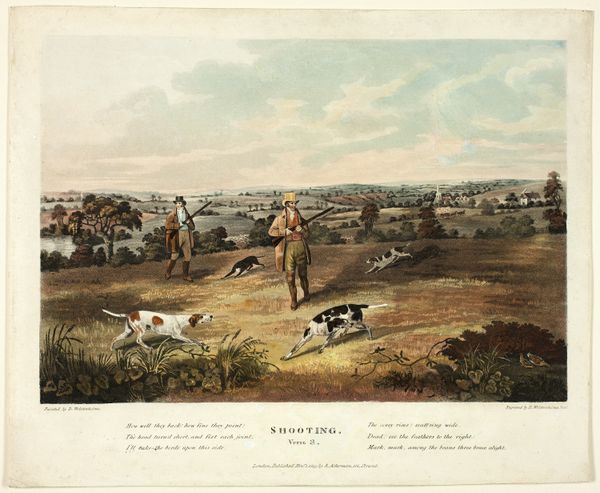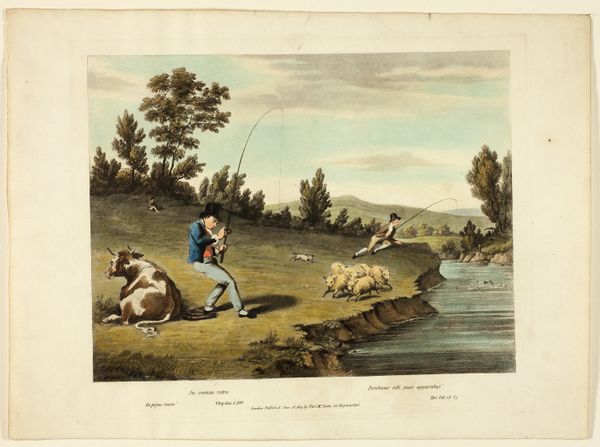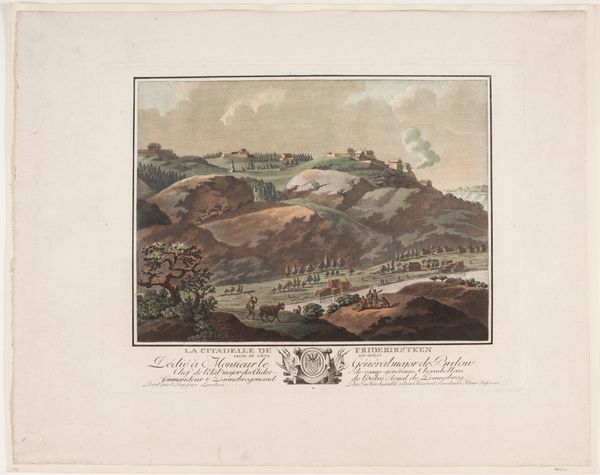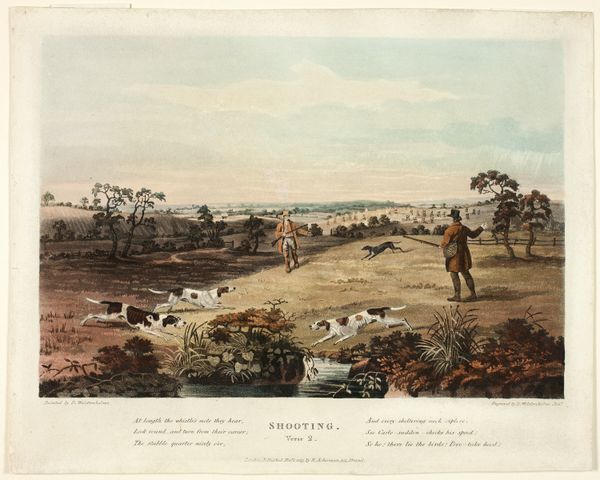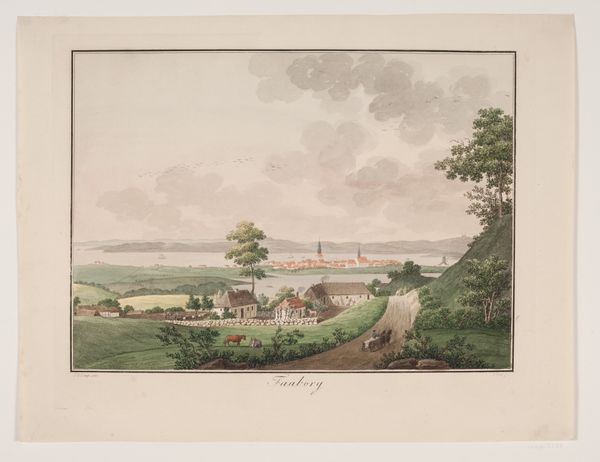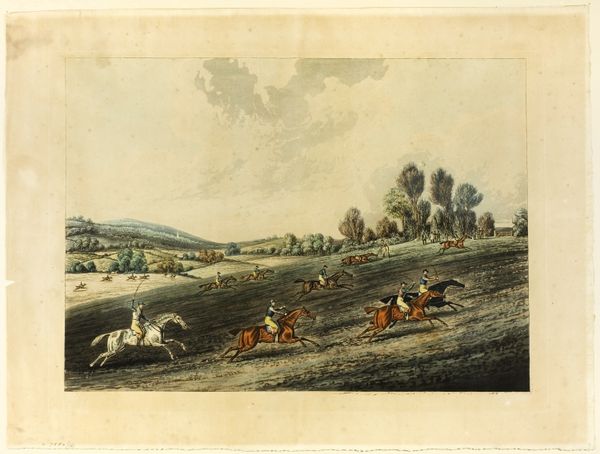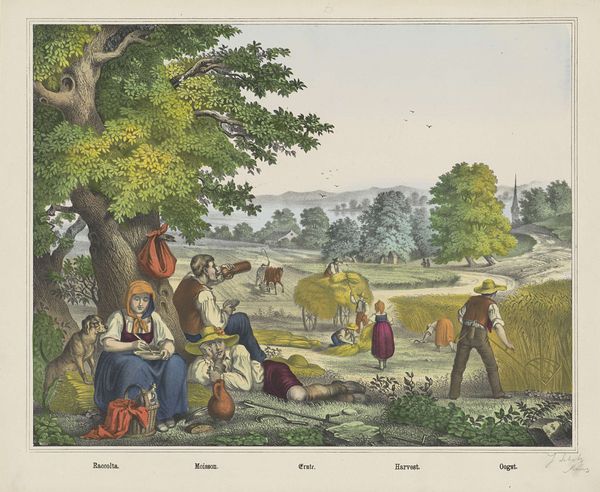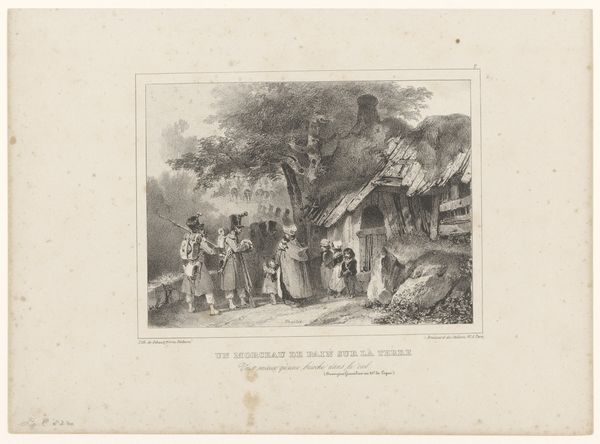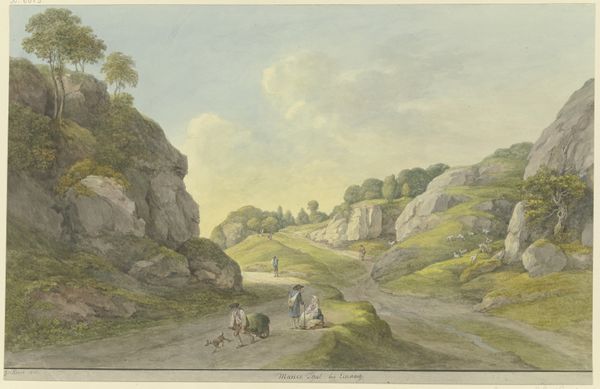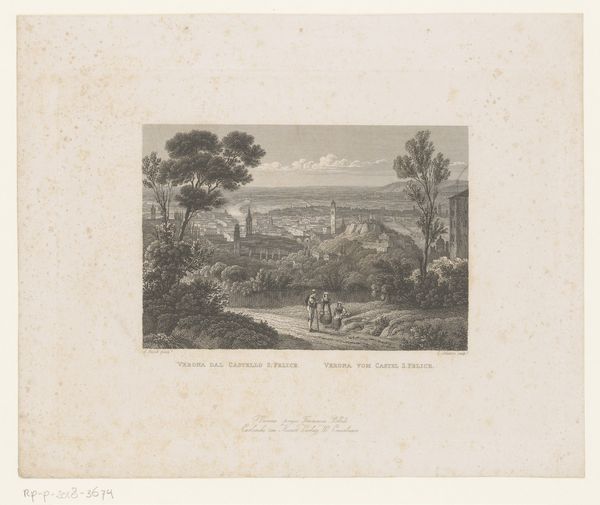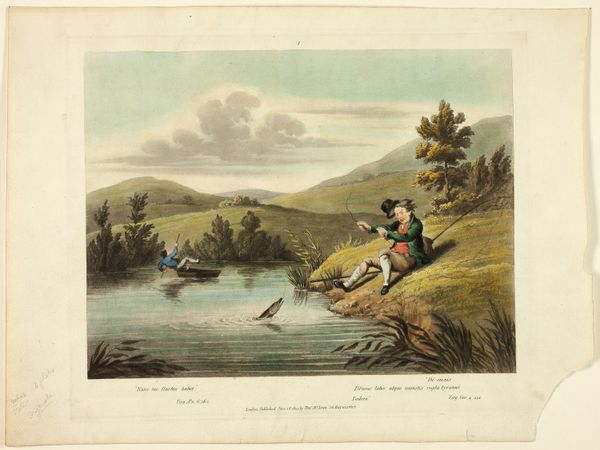
drawing, print, plein-air, paper
#
drawing
#
narrative-art
# print
#
plein-air
#
landscape
#
paper
#
romanticism
#
genre-painting
Dimensions: 170 × 250 mm (image); 222 × 277 mm (sheet)
Copyright: Public Domain
Editor: Here we have "Shooting: Verse 1," a print made with drawing on paper by Dean Wolstenholme in 1819. It evokes a sense of the English countryside... idyllic, perhaps a touch romantic? It feels so calm, almost staged. What strikes you about it? Curator: Staged is a good word! It’s less a snapshot and more a tableau, isn't it? Wolstenholme seems fascinated by capturing a very particular lifestyle, almost like crafting a verse himself. See how the landscape isn't just background; it's practically another character in the narrative? It's carefully balanced to complement the hunt itself. Does it remind you of anything? Perhaps a specific type of poetry of the time? Editor: Maybe a pastoral poem? Something celebrating rural life, but perhaps a bit idealized? I am especially thinking about Wordsworth, since he was still alive. Curator: Precisely! And there's a tension there. While celebrating this romantic vision of country pursuits, it also hints at the exclusivity and class divisions of the time, wouldn't you agree? The hunters are elegantly dressed, and this leisurely activity shows considerable wealth and privilege in comparison to a more Romantic artist like Friedrich. What do you make of the dogs? Editor: They certainly inject a sense of dynamic movement, and perhaps of excitement, in contrast to the relatively static poses of the men. But it all still feels...very controlled. Curator: Exactly! It's a controlled release, wouldn't you say? Almost a metaphor for society itself at the time, which contrasts many representations by others. This gives so much space for interpretation about the way of seeing and judging things, isn't it? Editor: That’s a fresh and unexpected idea that the “controlled release” may also tell us much about societal expectation, thanks! Curator: Thank *you*. It's always fascinating to look beneath the surface of these seemingly simple scenes. Isn't that just an enlightening way of reading things into visual narrative?
Comments
No comments
Be the first to comment and join the conversation on the ultimate creative platform.
